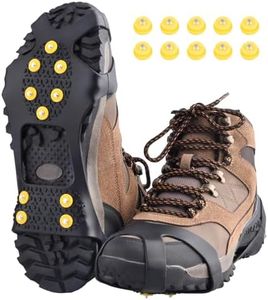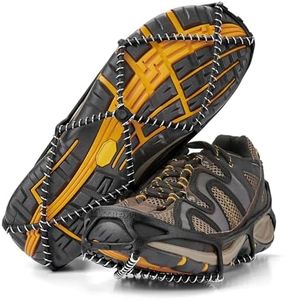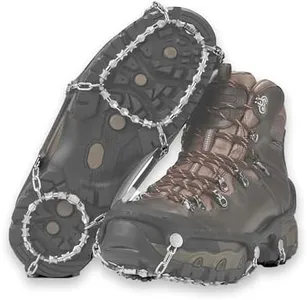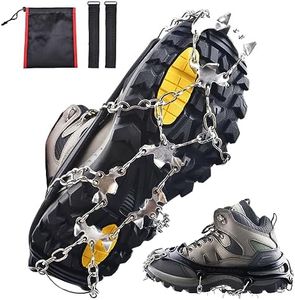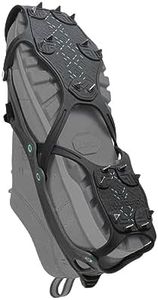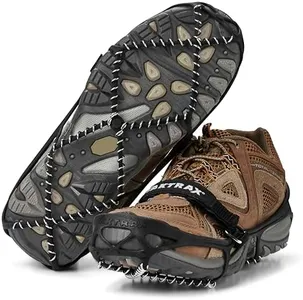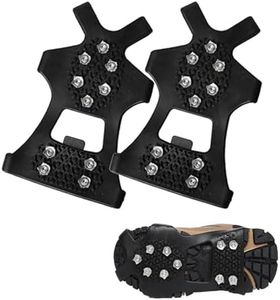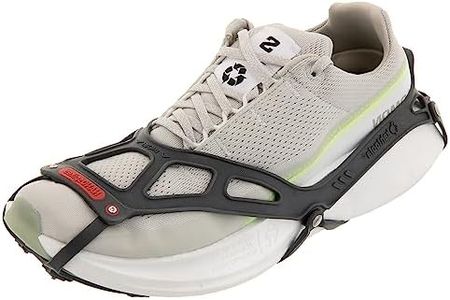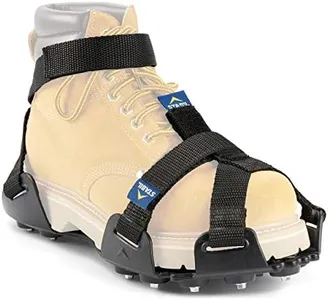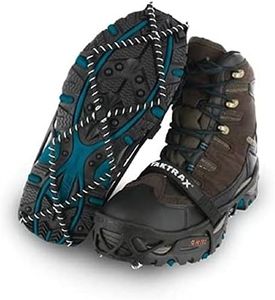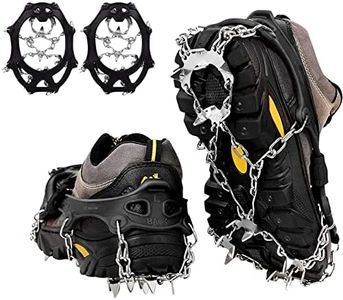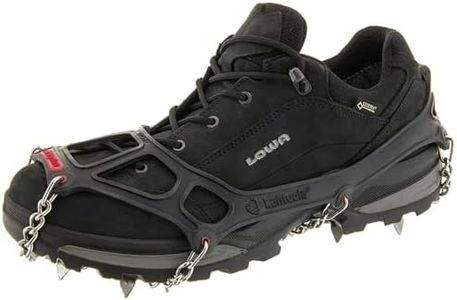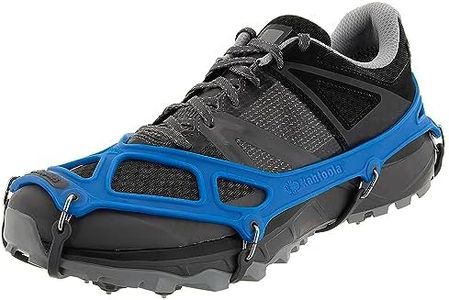We Use CookiesWe use cookies to enhance the security, performance,
functionality and for analytical and promotional activities. By continuing to browse this site you
are agreeing to our privacy policy
10 Best Ice Cleats
From leading brands and best sellers available on the web.Buying Guide for the Best Ice Cleats
When choosing ice cleats, it's important to focus on your personal needs and where you'll be using them. Ice cleats are designed to give you better grip and stability when walking, running, or working on slippery, icy surfaces. The right pair can help prevent slips and falls during winter. To make a good choice, pay attention to a few key aspects like the type, size, traction system, durability, and ease of putting them on and taking them off. Knowing what, where, and how often you will use ice cleats is the best way to start narrowing down your options.Type of Ice CleatsIce cleats come in different types based on their intended use, such as walking or running, and for casual or professional purposes. Some are lightweight and made for everyday walking, while others are heavy-duty for more challenging jobs or terrains. If you just want to walk your dog or stroll around town, a basic or medium-duty cleat will usually be enough. For outdoor workers or those trekking on very icy or rugged surfaces, a heavy-duty option with more aggressive spikes is better. Your specific use case—how and where you’ll wear them—should guide your choice.
Size and FitSize and fit determine how comfortably and securely the ice cleats will stay on your shoes or boots. Ice cleats often come in small, medium, large, and extra-large sizes or are labeled by shoe size ranges. A proper fit ensures both comfort and safety. If they're too loose, they can shift or fall off; too tight, they can be hard to put on and may damage your footwear. To pick the right size, always check the sizing chart provided by the brand and consider the type of footwear you’ll be using most often, for example, sneakers or bulky winter boots.
Traction System (Spikes or Coils)Traction is provided either by metal spikes, studs, or coils embedded in the rubber base. Spikes and studs give aggressive grip, especially on hard-packed ice, while coils may be more comfortable and suitable for mixed conditions with snow and slush. Fewer, shorter spikes are good for city sidewalks and casual use, while more or longer spikes offer better grip for hiking or work environments. Choosing the right style depends on the amount of traction you need: city walkers need less aggressive traction, while those in rural, hilly, or very icy places should look for more robust options.
Durability and MaterialDurability depends on the material of both the body and the traction elements. Common materials include tough rubber, thermoplastic elastomers, and steel for the spikes. If you’ll use ice cleats every day or on rough terrain, sturdier construction with reinforced materials is important for long-lasting performance. On the other hand, if you only need them occasionally for walking to work or to the store, a lighter and more flexible set may be perfectly fine. How often and where you plan to use them determines how much you should prioritize durability.
Ease of Putting On and Taking OffSome ice cleats are designed to stretch easily over different shoes, while others have buckles or straps. If you expect to take the cleats on and off frequently—such as entering buildings or changing from indoors to outdoors—choose ones known for easy removal and attachment. Consider your mobility and hand strength too, as some designs can be challenging, especially in cold weather. People with limited hand dexterity or those who wear gloves may prefer slip-on designs.
